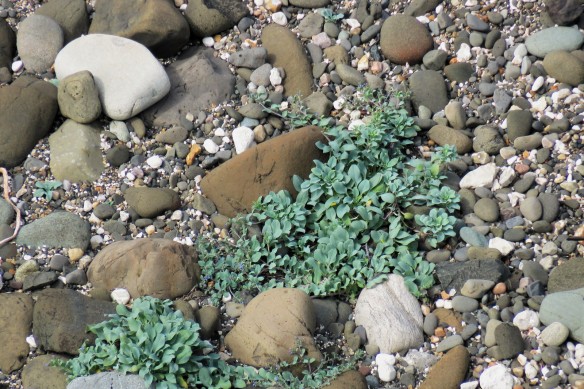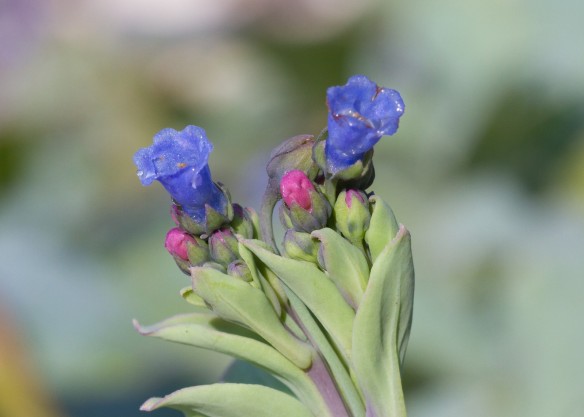 In August we made a special trip to meet one of Rathlin’s rarest plants. In Ireland and Britain, Oysterplant Mertensia maritima occurs only on northern coastlines, and in Northern Ireland it is listed as a priority species known from just a handful of sites. It grows on shingly beaches and on Rathlin, as far as we know, is found in just one location.
In August we made a special trip to meet one of Rathlin’s rarest plants. In Ireland and Britain, Oysterplant Mertensia maritima occurs only on northern coastlines, and in Northern Ireland it is listed as a priority species known from just a handful of sites. It grows on shingly beaches and on Rathlin, as far as we know, is found in just one location.
As you walk along the cliff top at Roonivoolin, look down onto the beach below and you may notice some sprawling masses of bluish grey leaves emerging from the white and black ‘salt and pepper’ pebbles. The masses of stems and leaves are distinctive and easily visible from the top of the cliff, but inspection at close quarters is necessary to appreciate the plant’s flowers, because they are tiny.

The view from the cliff top at Roonivoolin, looking across Church Bay towards the western arm of the island. The shoreline below is the Oysterplant’s realm.

A bird’s eye view of Oysterplants, taken from the cliff top walking path.
Up close, the flowers are five-petalled and tubular, and they grow in clusters at the end of the stems. They start out pink, but turn bright blue as they get older. The leaves are very fleshy and reputedly taste like oysters (giving the plant its English name), but it’s a protected species so you mustn’t damage it to find out.

Oysterplant flowers – those just beginning to bloom are pink, but the fully opened ones are bright blue.

The Oysterplant grows very low, sprawling across the pebbly ground. The many stems have fleshy leaves along their length, and numerous flowers at their tips.
Oysterplant flowers from June to August and is undoubtedly one of Rathlin’s botanical highlights at this time of year. However, there is a wealth of other plantlife to discover, and Roonivoolin is as good a place as any to start looking. Happy botanising!

Oysterplant growing across one of Rathlin’s characteristic black and white pebbled beaches.
